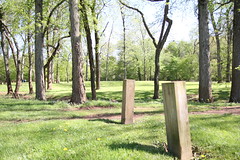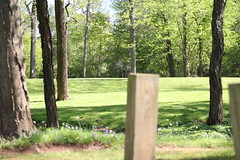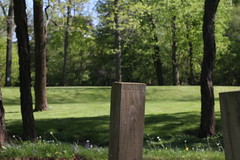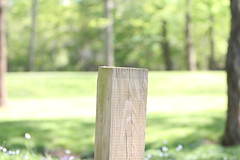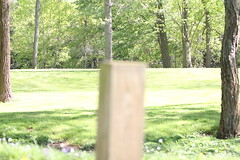Learning to Balance
It's like riding a bicycle. Explanations can only go so far. It has to be experienced. But I think I have tips that will get there faster.
- Level set your expectations, you are looking for reduced motion. It might not be perfectly still like a dolly but stable enough not to cause nausea.
- Find your camera's center of gravity by feel. Put your finger on the bottom and find the place where it least topples. It's like finding the balance point of a plate with a cupcake on one side. You can use a pencil under a camera plate to help you find it.
- Side to side balance is priority when centering as it will have the most tendency to be visible in footage.
- The Blackbird's bubble level isn't very accurate. My Canon 7D has an electronic level that gives great feedback since its at the very center of gravity. But that's the only camera I have that has it. The rest need an external level. A substitute would be a spirit level designed for the cold/hot shoe. It's closer to the center of gravity for the camera and should therefore be more accurate than one ones mounted on the corner of a stage.
- The bubble levels are a guide, you need to develop a feel for balance. When I balance I make it front heavy, then back heavy until I find the mid point. I have to be patient until I can be instinctive on how close I am to the most stable point. I do the same for the roll (left-right) component. Be sure to have the T-Bar extended all the way so the rig will be sensitive. While it's sensitive it's easier to see if the balance is off since it will teeter. You may never seen it completely still. This is fine as YOU can compensate for it with your left hand when you fly. You can also use smooth touch to cheat.
- Drop time of 2 seconds is a good start. I set my T-bar to 22 to achieve this. Why 2 and not 1.5? It's easier to count whole increments that half. Use a stopwatch or a watch with a seconds hand to time it. Counting "One Mississippi" may not roll off the same way for everyone.
- Trust the Blackbird to do its job. The rig may seem to teeter constantly, but that does not necessarily show up in the footage. I've learned that when I see the Blackbird teeter constantly, it's actually compensating against ME! When I review the footage later it shows shows smooth action.
Stable flight
- Wind is the enemy. Find a way to block a breeze when you can. If you need to see how easily it can be influenced by wind, set the rig in front of an air conditioner or electric fan. Outdoor wind may be stronger.
- Use two hands. The left hand should lightly touch the gimbal. This is the toughest part of learn as you have to discover by yourself just how much pressure is appropriate. For me I only apply pressure when I want to turn it. Most of the time I'm just holding it while trying not to get in its way. See how hard it is to describe?
- Use the same shoes when flying. I have a pair of waterproof Merrel shoes that I take with me everywhere. The cushion isn't as soft as my Nike cross-trainers but it's the shoe I'm most likely to have on when I'm actually shooting. You need to get a feel for how the ground affects your step while flying. Your legs, especially when bent, will absorb a lot of shock that would otherwise transfer through your arm into the rig. If you keep the same shoes it will be easier to guess if the ground is too hard and you need to step a bit more lightly.
Securing Parts
There are three parts that constantly loosen on my Blackbird that need to be secured.
- Tighten the gimbal to the stage. When I do pan motion or hold the Blackbird between takes I tend to hold it by the neck of the gimbal that attaches to the stage. This tends to unscrew it thus changing the height of the balance point.
- The lower fastening screw on the T-bar tends to loosen especially after the bar hits something. Make sure it's tight after picking it back up to use.
- The rubber shoe on the resting stand comes off. Secure it with a tie down.
Sample Flights for Reference
I wouldn't call these examples of a perfectly balanced rig but the footage is usable.
Indoors, walking, shot in 24fps
Outdoors, running and walking, shot in 60fps, slowed down to 24fps






